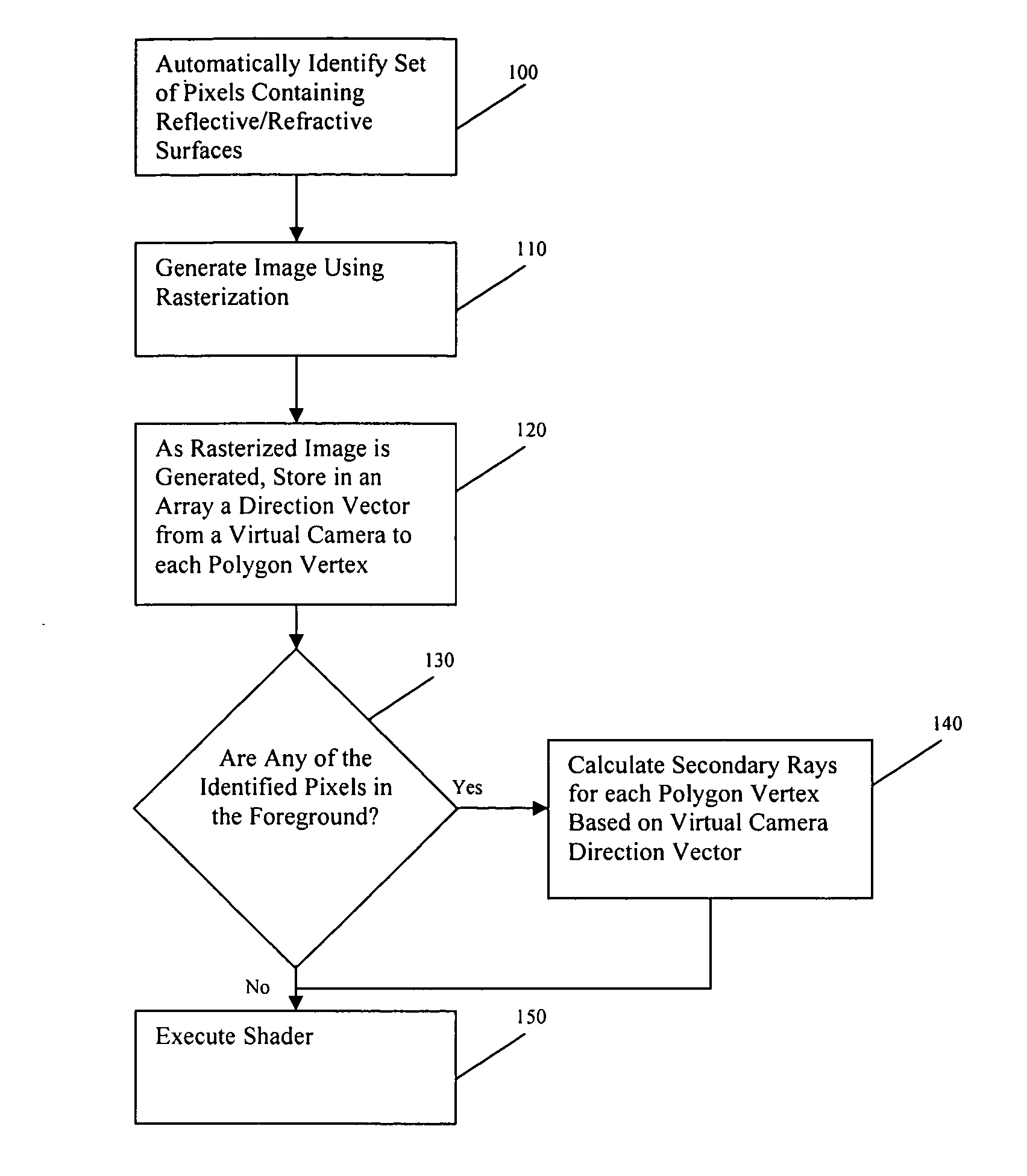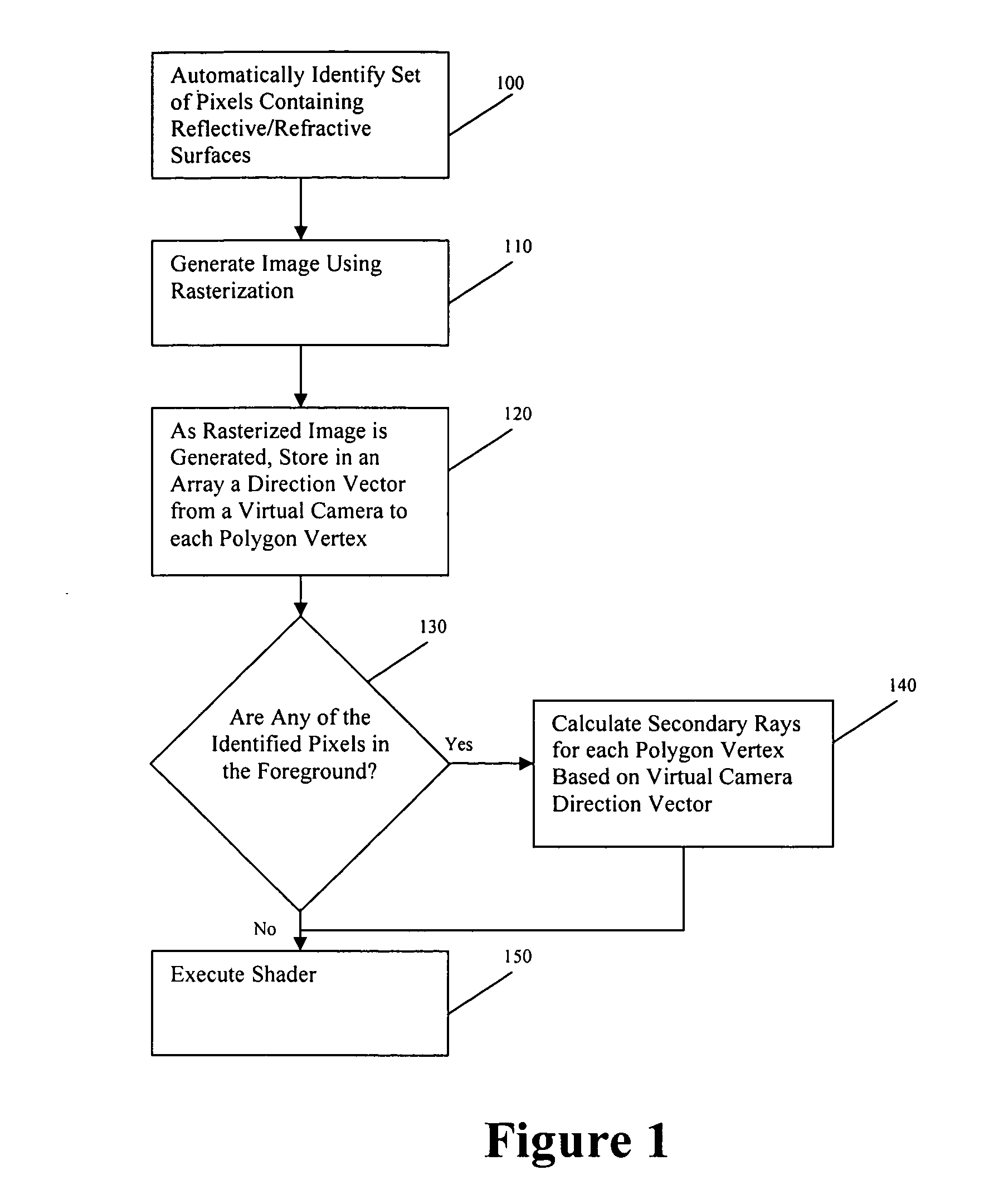Method for hybrid rasterization and raytracing with consistent programmable shading
a raytracing and hybrid technology, applied in the field of computer generated visualizations, can solve problems such as visible differences in color and brightness, and achieve the effect of consistent image, accurate evaluation and rendering reflections
- Summary
- Abstract
- Description
- Claims
- Application Information
AI Technical Summary
Benefits of technology
Problems solved by technology
Method used
Image
Examples
Embodiment Construction
[0029] Reference will now be made in detail to the preferred embodiments of the present invention, examples of which are illustrated in the accompanying drawings.
[0030] As described above, if only planar surfaces are to be considered, all rays (primary as well as secondary) can be seen as originating from one point, that of the virtual camera. Such an image could easily be generated using rasterization. However, if reflections, refractions, or other such optical distortions exist in the scene, such as, without limitation, those naturally occurring on curved surfaces such as vehicle windshields, all secondary rays originate from different points and it is therefore necessary to handle these rays separately using ray tracing.
[0031] In one embodiment, only selected surfaces where ray tracing effects (e.g. reflections or refraction) are apparent are rendered using ray tracing, with other parts of the image rendered using rasterization. More specifically, only secondary rays (those ref...
PUM
 Login to View More
Login to View More Abstract
Description
Claims
Application Information
 Login to View More
Login to View More - R&D
- Intellectual Property
- Life Sciences
- Materials
- Tech Scout
- Unparalleled Data Quality
- Higher Quality Content
- 60% Fewer Hallucinations
Browse by: Latest US Patents, China's latest patents, Technical Efficacy Thesaurus, Application Domain, Technology Topic, Popular Technical Reports.
© 2025 PatSnap. All rights reserved.Legal|Privacy policy|Modern Slavery Act Transparency Statement|Sitemap|About US| Contact US: help@patsnap.com



